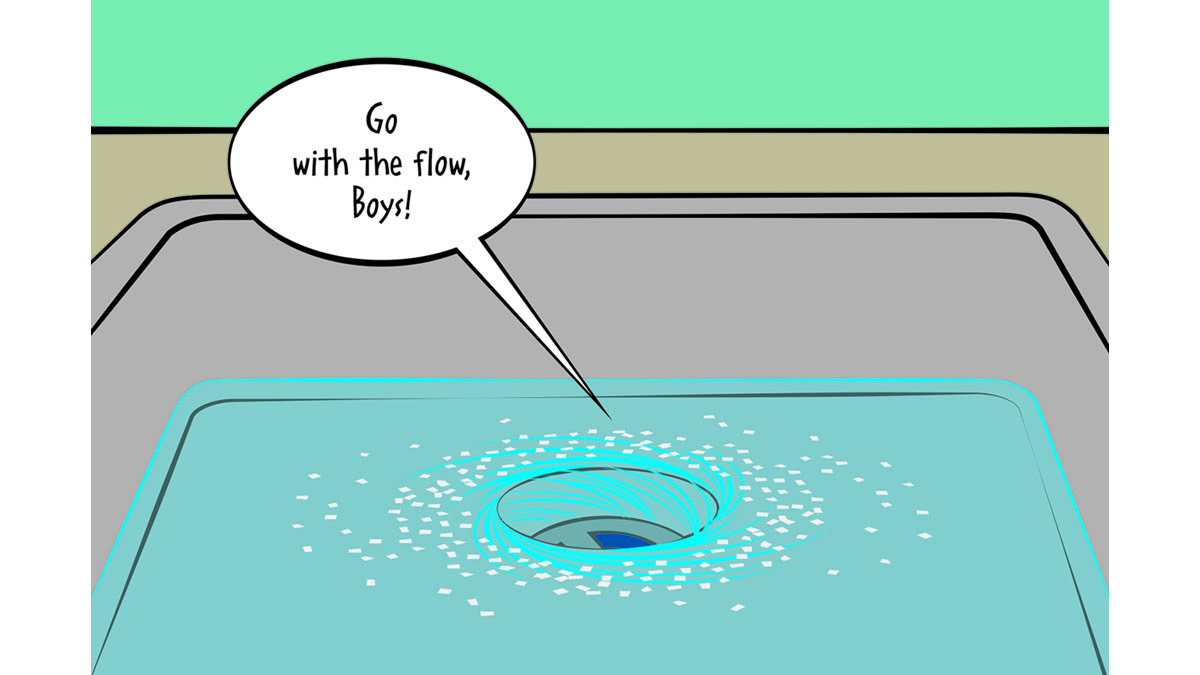Helping traumatised students
By Gabe Kraljevic
Posted on 2019-02-04
I am currently reading a book about childhood trauma in the classroom. How do we as teachers help students who have had a traumatic experience? — A., Iowa

I discovered the biggest hole in my teacher preparation when, after 25 years of teaching, a tragedy outside of school deeply affected students in my classroom. I had no idea how I was supposed to respond. I did the only thing I could – I asked for help. Guidance counselors and school psychologists are better trained to help with tragic situations. I sought out their advice and kept them apprised of what I observed in my classroom.
My other students didn’t know if they should talk to the traumatized students, if they could laugh or joke around, or if they could just go about their lives as normal. A classroom is a micro-community which we cultivate as teachers. This community was hurting and I asked if one of the specialists could come and talk to the classroom.
This event greatly affected me, too. Thankfully, my wife helped me cope.
Learning doesn’t mean much to someone when they are dealing with a horrible situation. Give all the support you can by easing off and giving them space and time. When it comes to class and homework, grading, and testing, remember your grade book is your grade book. Be a caring adult.
So, my advice to you:
- Seek the help and advice of specialists.
- Remember that other students may be affected indirectly.
- Observe and report what you are seeing to the appropriate counselors.
- Take care of yourself. Find a confidant, seek out personal help. Almost all teacher organizations have help lines.
- Be compassionate and flexible in teaching and grading.
When they can, traumatized students may be able to pick up the pieces and you should be there to hand those pieces to them with compassion and understanding.
I hope you never need this advice.
I am currently reading a book about childhood trauma in the classroom. How do we as teachers help students who have had a traumatic experience? — A., Iowa

Ed News: State Legislation Could Accidentally Mess Up Science Education
By Kate Falk
Posted on 2019-02-01

This week in education news, nationwide study revealed that college STEM summer bridge programs double the odds that students plan to pursue a STEM career, compared with students without program exposure; increase in state education funding doesn’t always reach teachers’ in the form of pay raises; new legislation in three states target science education; report suggests “inaccurate narrative” in the public about teacher shortages; and leveraging computer science is critical to every classroom.
Students Double Down on STEM Careers After College Summer Bridge Programs
A new study illuminates one powerful and effective way to address the STEM worker shortage and lack of diversity: Get students enrolled in bridge programs: Get students enrolled in bridge programs. Read the article featured in Education News.
For Districts, Teacher Pay Can’t Always be a Top Priority
In recent years, more governors have been increasing education funding in their states, but that boost doesn’t always reach teachers’ pockets in the form of pay raises. In an Education Week article, superintendents, school board members and district chief financial officers share why raising teacher salaries is not always a priority. Read the brief featured in Education DIVE.
State Legislation Could Accidentally Mess Up Science Education
Bills in three states want teachers to avoid topics that appear in party platforms. In a bid to keep “controversial issues” out of the classroom, the bills would call for teachers not to advocate on any topics that have appeared in the platform of a state political party. In the US, that would include evolution and climate change. Read the article featured in Ars Technica.
Report Suggests ‘Inaccurate Narrative’ Around Teacher Shortages
Until data reporting on teacher shortages improves, teacher candidates will have “false impressions” about their job prospects, and policymakers will create broad solutions that fail to address states’ and districts’ specific needs, says a Bellwether Education Partners report released Wednesday. Read the article featured in Education DIVE.
Language Adds Up For ELLs in K12 Math Instruction
Embedding English literacy and reading in math instruction gives ELLs a learning boost. Read the article featured in District Administration.
Why Leveraging Computer Science is Crucial to Every Classroom
Computer science has many facets, meaning educators can leverage various components of the field to reach students across all levels and learning abilities. With technology present in almost every classroom, educators have a greater opportunity to implement computer science lessons throughout the curriculum. Read the article featured in eSchool News.
New Governors Aim to Funnel Money Into Early Education
After campaigning on the expansion of preschool and other early-childhood programs, many of the nation’s newly elected governors are following through with budget proposals that include money to support children from cradle to school entry. Read the article featured in Education Week.
Stay tuned for next week’s top education news stories.
The Communication, Legislative & Public Affairs (CLPA) team strives to keep NSTA members, teachers, science education leaders, and the general public informed about NSTA programs, products, and services and key science education issues and legislation. In the association’s role as the national voice for science education, its CLPA team actively promotes NSTA’s positions on science education issues and communicates key NSTA messages to essential audiences.
The mission of NSTA is to promote excellence and innovation in science teaching and learning for all.
Follow NSTA

The Poetry of Science
Poetry by the Numbers
By Sylvia Vardell and Janet Wong
Methods & Strategies
Improving the Quality of Engineering Design Challenges
Improving the Quality of Engineering Design Challenges
By Matthew Perkins Coppola and Alice Merz
Science 101
Why Does Water Swirl When it Goes Down a Drain?
Engineering Encounters
Authors and Engineers
Applying engineering principles to create pop-up books
Formative Assessment Probes
Balance Beam
Figuring Out a Mathematical Rule
By Page Keeley
Teaching Through Trade Books




